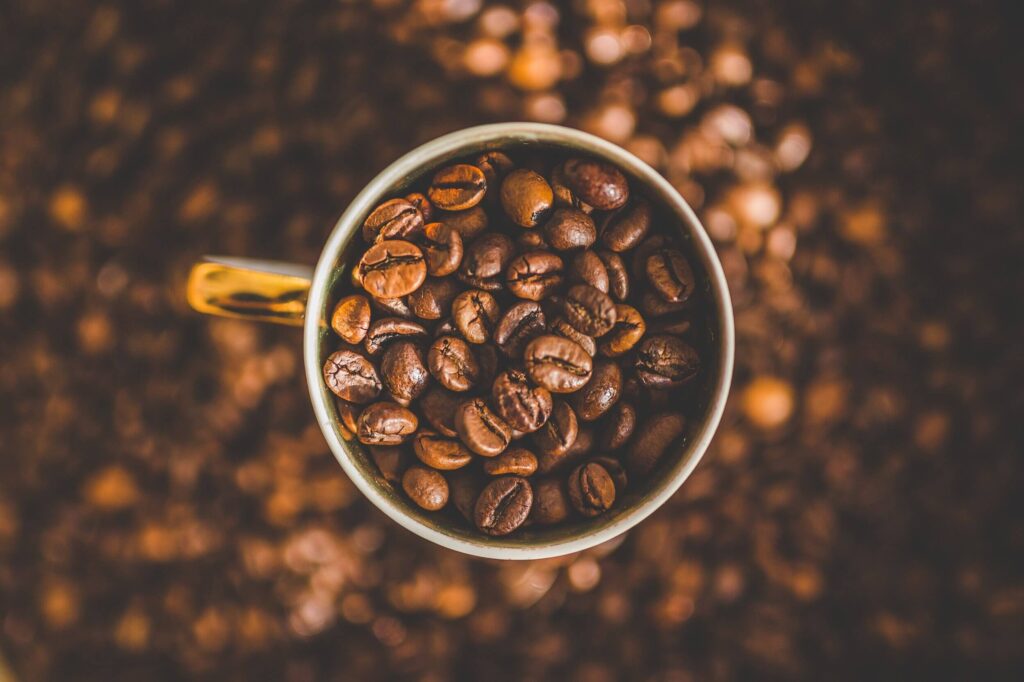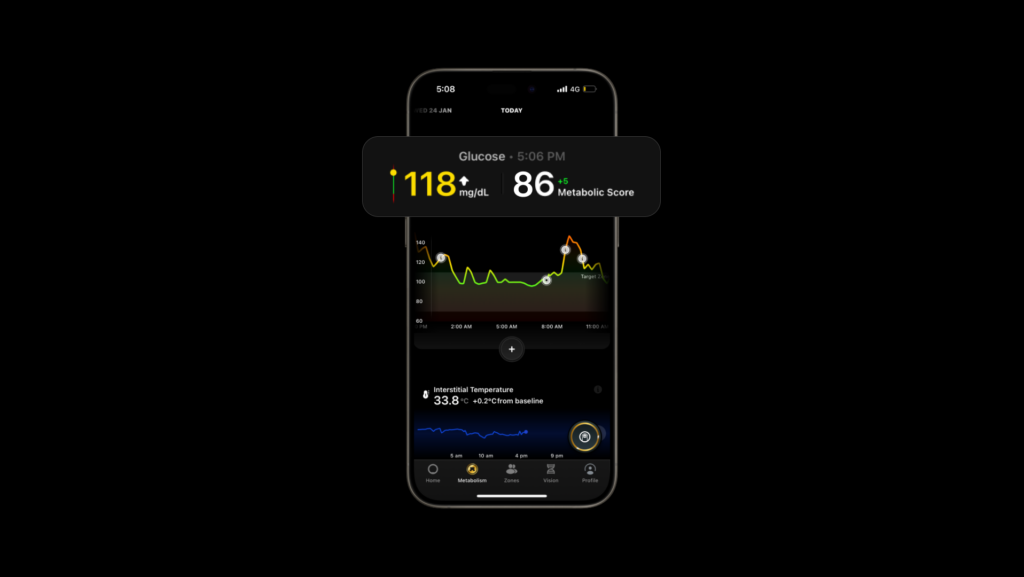Colloquially, we use metabolism to refer to the amount of calories we burn per day, or how easily we lose weight. But that’s not a complete picture of what metabolism is. Metabolism is the broad term used to name all the processes that happen in the body automatically that keep us alive.
Now, there is some truth in the former, colloquial definition. One of the main processes the body must execute in order to remain breathing and living is breaking down molecules into energy. It keeps us moving, grooving, and temperature-regulated and calories are one measurement of energy.
What Is Resting metabolic rate?
Our bodies use energy in four ways. Total daily energy expenditure or TDEE encapsulates the amount of energy used by the body daily. It can be broken down into:
Energy used to break down food: This process is called the thermic effect of food (TEF). It is the energy required for digestion, absorption, and disposal of ingested nutrients. TEF uses 10% of energy. It is defined as ‘the increase in metabolic rate after ingestion of a meal’.
Energy used for activity: Activity energy expenditure (AEE) is the most variable component. It includes exercise and non-exercise activity thermogenesis (NEAT). Exercise and NEAT can comprise 20–50% of total energy expenditure. NEAT is everything that we do that is not sleeping, eating, or sports-like exercise. It is the energy expended in daily tasks like standing, walking, typing, cooking, gardening, and even fidgeting.
Sleeping metabolic rate: SMR refers to the energy expended during sleep. According to Dr Michael Breus, a sleep specialist, author and expert, glucose metabolism starts to increase in the second half of the night when you enter REM sleep.
Resting metabolic rate: Resting metabolic rate (RMR) is a measurement of how much energy (calories) the body burns while performing basic functions when you are at complete rest—for instance, while you’re laying in bed or watching television. Some of these basic bodily functions include breathing, circulating blood, brain function and organ function.
Let’s examine the most essential function, breathing. RMR is also referred to as Resting Energy Expenditure. One of the ways of computing energy expenditure is the use of a metabolic cart by analysis of respired gases (usually expired) to derive the volume of air passage through the lungs, the amount of oxygen extracted from it (oxygen uptake VO2) and the amount of carbon dioxide, as a by-product of metabolism, measured to explain values corresponding to 1 minute time intervals. With these calculations, the resting energy expenditure (REE) and respiratory quotient (RQ) can be calculated. The RQ represents the ratio of carbon dioxide exhaled to the amount of oxygen consumed by the individual. RQ is useful in interpreting the results of the REE.
Resting metabolic rate vs. Basal metabolic rate
These two measurements are often used interchangeably, but they are slightly different.
Resting metabolic rate (RMR) is an important framework to determine energy balance, which accounts for approximately 60% of the total energy expended. Resting Metabolic Rate (RMR) tests estimate the number of calories burned at rest to determine baseline caloric needs. They also generally offer a measure of fat and carbohydrate utilization.
Resting metabolic rate is the number of calories the body burns at rest while completing basic functions and basal metabolic rate (BMR) is the minimum number of calories your body needs to maintain basic functions.
Since BMR is a measure of the calories your body requires, it’s usually slightly lower than RMR. The resting metabolic rate only marginally varies from the BMR.
RMR and Metabolic health
In the journal, Metabolic Syndrome and Related Disorders, metabolic health is described as having ideal levels of blood sugar, triglycerides, high-density lipoprotein (HDL) cholesterol, blood pressure, and waist circumference, without using medications. Research suggests that a low resting metabolic rate is associated with metabolic syndrome – a cluster of conditions that simultaneously occur, increasing your risk of heart disease, stroke and type 2 diabetes. These conditions include increased blood pressure, high blood sugar, excess body fat around the waist, and abnormal cholesterol or triglyceride levels.
The organs working overtime are the heart, brain, lungs, liver, and kidneys, which constitute about 80% of the total calories used every day. The brain alone uses about one-fifth of your RMR. Children’s calorie needs skyrocket when at rest in comparison to adults. Children under age at rest approximately burn twice as many calories as adults. The RMR drops by about 25% between ages 6 and 18, and every consequent decade it declines by another 2% to 3%. As we grow older, we become less active and this results in the loss of calorie-burning mass. This brings us to the concept of longevity.
Longevity & RMR
According to the rate of living and free oxidation theories, a lower RMR corresponds with a longer lifespan. In the early 20th century, biostatistician Raymond Pearl hypothesized that an organism’s metabolic rate is considered to be inversely proportional to the maximum lifespan, implying that species that live fast will die young, whereas those that live slower owing to a slower metabolic rate will actually live longer.
Studies support the connection between elevated RMR and increasing abdominal body fat as a direct consequence of its higher metabolic activity. The negative association between RMR and lifespan is primarily driven by the impact of fat mass, which is positively related to both RMR and mortality and hence RMR, negatively to lifespan.
Studies have shown that a moderately restricted caloric intake can slow down your body’s metabolic rate so that it uses less energy to sustain everyday functions. Over time, this would result in lower oxidative stress (a disrupted balance between the production of reactive oxygen species or free radicals and antioxidant defenses) to cells and tissues, as suggested by longevity researchers. Luigi Fontana, an internist who led the Washington University trial proposes that the answer may lie in specific insulin pathways rather than metabolism decrease. According to the quote of the lead author and researcher of the calorie restriction study to a publication, “What we are finding now is that it’s not the number that matters. Genetics, the composition of the diet, when you eat and what’s in your microbiome influences the impact of calorie restriction.”

RMR and Athletic Performance
Energy availability is one of the dominant factors in enhancing sports performance. The accurate computing of daily energy needs plays a pivotal role in maintaining an optimal body composition and working out nutritional strategies for meeting body requirements. RMR is an essential component of daily energy needs and accurate RMR measurement can be a key determinant in assessing optimal energy requirements.
Research suggests that RMR can serve as an indicator of energy availability (EA) or the energy remaining for metabolic processes once the energy cost of exercise has been subtracted from dietary intake. Adequate energy is paramount for training consistency, specifically during intensified periods, since prolonged energy restriction can lead to dysregulated physiological function and a high risk of fatigue, illness and injury, as well as maladaptation of the prescribed training. Energy homeostasis is centrally regulated, and RMR is connected with appetite and energy intake. When energy intake is insufficient to uphold an intensified training load, athletes are more likely to suffer suboptimal EA and a reduced RMR.
Studies indicate that a positive energy balance leads to increased body weight, obesity and metabolic syndrome while a negative energy balance may be conducive to nutrient fatigue, deficiencies, and muscle mass loss. Exercising with an increased training load, in the absence of adequate energy intake can lead to significant reductions in both absolute and relative RMR, body mass, HRV and performance, and mood disturbance. Such physiological disturbance and maladaptation to training may be detrimental to athletes who cannot afford to lose mass, or those undergoing intense training prior to competition. It could make way for a torrent of changes in metabolic, neural and hormonal mechanisms from the body’s effort to conserve energy and uphold homeostasis when energy demands are increased. The consistent monitoring of energy intake, power output, body mass and HRV during such training periods may help overcome fatigue and manage any decreases in RMR, and subsequently, harbour a space for a positive training adaptation.
What Is A “Normal” Resting Metabolic Rate?
Usually, the answer to this question is that for women an average RMR is around 1400 calories per day, and slightly higher for men at just over 1600 calories.
But it’s important to note that research has shown that this may be an overestimation for certain populations.
So, if you want to know what your RMR is—as well as whether or not it’s normal—your best bet is to talk to a healthcare provider who can test your RMR (or BMR) at a lab.
According to research, the Cunningham equation was found to predict measured RMR most accurately for athletes (within 158 kcal/d for men and 103 kcal/d for women). Fat-free mass was the ideal predictor of RMR in men, whereas energy intake was the best predictor in women.
What Influences Resting Metabolic Rate?
Resting metabolic rate is influenced by a variety of determinants. These include body surface area (a calculation on height and weight), age, and gender. The greater the body surface area, the greater the RMR. With the increase in age of the individual, the RMR may decline. The primary cause of this decline may be due to a decrease in muscle mass.
For instance, males have a higher RMR than females. This is mainly because of greater muscle mass.
Other factors of resting metabolism include thyroid hormones, catecholamines (primary catecholamines include dopamine, epinephrine, and norepinephrine), genetics, body temperature, and in women, the phase of the menstrual cycle.
Increased levels of thyroid hormones or catecholamines lead to an increase in RMR. The opposite is true when there is a reduction in consumption (energy intake) which decreases a thyroid hormone called Triiodothyronine. This hormone plays a vital role in the body’s metabolic rate, heart and digestive functions, brain development, bone maintenance and muscle control.
Energy intake seems to be directly proportional to norepinephrine secretion. The decrease in energy intake also leads to a decrease in norepinephrine release. The reduction in Triiodothyronine and norepinephrine can subsequently diminish metabolic rate.
While there is a tremendous amount of information pertaining to metabolic rate, it is rife with contradictions. The mechanisms of alteration in metabolic rate and the extent of the alteration are not well-defined.
Having said that, dietary intake and exercise can influence resting metabolism.
Diet
Restricted dieting seems to cause a reduction in RMR, for a temporary duration. There is a debate in the scientific community on whether this reduction in RMR is related to loss of protein or to that of Fat Free Mass (FFM includes internal organs, bone, muscle, water, and connective tissue). There is also a discussion on whether the reduction is due to an adaptive mechanism for energy conservation triggered by the body, lowering RMR below a range that can be explained by lean body tissue reduction.
Based on a meta-analysis of multiple but comparable studies on dieting and metabolic rate, it was determined that RMR reduces when an individual follows a diet program and consumes approximately or less than 941kcal/d. These studies were primarily conducted with female subjects between 31 and 45 years.
It’s a hypothesis that coupling exercise with a diet program can progress fat loss, preserve fat-free weight, and prohibit or slow down the decline in RMR than a restricted diet program alone. A meta-analysis of studies evaluating the effects of diet and exercise found that when moderate-intensity aerobic exercise was added to the mix along with a low-calorie diet, some of the reductions in RMR were prevented.
Combination of diet and exercise
Though the RMR didn’t return to the values for the established baseline, it has been associated partly to the preservation of FFM or decreased loss of FFM when exercise is added to the dieting program. It is important to note that the effects are very much dependent on the type, duration and intensity of exercise prescribed.
Though the RMR didn’t return to the values for the established baseline, it has been associated partly to the preservation of FFM or decreased loss of FFM when exercise is added to the dieting program. It is important to note that the effects are very much dependent on the type, duration and intensity of exercise prescribed.
Increasing RMR with exercise and diet
There is a direct relationship between resting metabolic health and the amount of lean muscle mass and an inverse relationship between a person’s metabolic health and body fat. As a general rule, the more muscle mass a person has the higher their RMR is, while the more body fat a person has the lower their RMR has.
Fat-free mass (FFM) represents a key factor in the variations in resting metabolic rate. In fact, according to the National Academy of Sports, RMR decreases approximately 0.01 kcal/min for each 1% increase in body fat. That means all other things being equal, a person with 28% body fat burns about 15 calories less per day while doing nothing compared to a person with 27% body fat.
That doesn’t sound like a lot at face value. But research shows that an increase in lean muscle mass also helps to increase RMR by about 10 kcal per day per pound of muscle mass, and these small increases add up over time.
Hence for the long term effectiveness of any weight loss programs, the loss of fat mass while maintaining FFM and RMR seems highly important. Studies have associated exercise training, specifically strength training, with promoting changes in RMR.
Protein: Consuming protein with every meal increases the Thermic Effect of Food (TEF). In fact, protein shows the largest rise in TEF (15-20%) compared to fat (0-3%) and carbs (5-10%). When you are eating sufficient protein, it boosts satiety, thus helping you feel fuller and preventing you from overconsuming. The drop in metabolism often associated with losing fat can be controlled by elevated protein intake as it prevents muscle loss most often associated with diets.
High-intensity interval training (HIIT): A study found that two minutes of sprint-interval exercise elicits 24-hr oxygen consumption similar to that brought on by 30 min of continuous endurance exercise. Results found that the significant body-fat losses observed are partially due to increases in metabolism post-exercise.
Resistance Training: RMR can be boosted with increased muscle. Since muscle is more metabolically active than fat, it causes the rise. The most effective way to build muscle is through resistance training. A study was conducted with 48 overweight and obese women. They were given an 800 calorie diet while being bucketed into the zones of:
- No exercise
- Aerobic exercise
- Resistance training
It was found that the women in the study who followed resistance training lost fat while maintaining muscle mass, whereas the other two groups lost fat as well as muscle. The ‘no exercise’ and ‘aerobic exercise’ groups experienced a drop in their metabolism due to the above-mentioned factors.
Conclusion
Resting metabolic rate (RMR) is a measurement of how much energy (calories) the body burns while performing basic functions when you are at complete rest—for instance, while you’re laying in bed or watching television. RMR can be influenced by a host of factors that include – thyroid hormones or catecholamines, sleep quality and duration, exercise and diet. It has been observed that increasing resting metabolic rate can be possible with resistance training coupled with high protein diet interventions, due to an upsurge in oxygen consumption, muscle mass and fat loss.
Disclaimer: The contents of this article are for general information and educational purposes only. It neither provides any medical advice nor intends to substitute professional medical opinion on the treatment, diagnosis, prevention or alleviation of any disease, disorder or disability. Always consult with your doctor or qualified healthcare professional about your health condition and/or concerns and before undertaking a new health care regimen including making any dietary or lifestyle changes.








